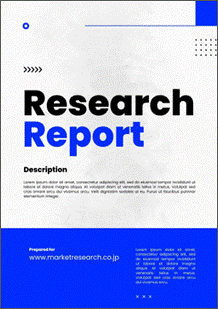 | • レポートコード:B-MOR-08107 • 出版社/出版日:Mordor Intelligence / 2018年5月14日 • レポート形態:英文、PDF、102ページ • 納品方法:Eメール(受注後2営業日) • 産業分類:Electronics |
| Single User(1名様用) | ¥629,000 (USD4,250) | ▷ お問い合わせ |
| Team User(7名様用) | ¥666,000 (USD4,500) | ▷ お問い合わせ |
| Corporate User | ¥1,295,000 (USD8,750) | ▷ お問い合わせ |
• お支払方法:銀行振込(納品後、ご請求書送付)
レポート概要
| 本資料は、一酸化炭素ガスセンサーの世界市場について調べ、一酸化炭素ガスセンサーの世界規模、市場動向、市場環境、タイプ別(無線)分析、技術別(半導体センサー、電気化学センサー、固体・MOSセンサー、PID、触媒、赤外線、その他)分析、用途別分析、アメリカ市場規模、ヨーロッパ市場規模、アジア市場規模、日本市場規模、中国市場規模、産業バリューチェーン分析、関連企業情報などをまとめた調査レポートです。 ・イントロダクション ・エグゼクティブサマリー ・一酸化炭素ガスセンサーの世界市場インサイト ・一酸化炭素ガスセンサーの世界市場環境 ・一酸化炭素ガスセンサーの世界市場動向 ・一酸化炭素ガスセンサーの世界市場規模 ・一酸化炭素ガスセンサーの世界市場規模:タイプ別(無線) ・一酸化炭素ガスセンサーの世界市場規模:技術別(半導体センサー、電気化学センサー、固体・MOSセンサー、PID、触媒、赤外線、その他) ・一酸化炭素ガスセンサーの世界市場規模:用途別 ・一酸化炭素ガスセンサーの世界市場:地域別市場規模・分析 ・一酸化炭素ガスセンサーの北米市場規模・予測 ・一酸化炭素ガスセンサーのアメリカ市場規模・予測 ・一酸化炭素ガスセンサーのヨーロッパ市場規模・予測 ・一酸化炭素ガスセンサーのアジア市場規模・予測 ・一酸化炭素ガスセンサーの日本市場規模・予測 ・一酸化炭素ガスセンサーの中国市場規模・予測 ・一酸化炭素ガスセンサーのインド市場規模・予測 ・一酸化炭素ガスセンサーの韓国市場規模・予測 ・関連企業情報・競争状況 |
The carbon monoxide gas sensors market is expected to register a CAGR of 6.54% over the forecast period (2018-2023). The scope of the report includes insights on the solutions offered by major players including providers of hardware, professional services, and integration solutions. The regions included in the study are North America, Europe, Asia-Pacific, Latin America, and Middle East & Africa. The study also emphasizes various end-user-based applications, such as industrial, medical, environmental, etc.
Medical Segment has New Opportunities for Carbon Monoxide Sensors
It is estimated that by 2050, people aged over 60 years will outnumber those below that age group. This is a key indicator of the potential demand for healthcare services in the coming years. Scientists and healthcare professionals have concluded that prevention and early detection monitoring is the only plausible and effective solution for dealing with the growing healthcare demand. Employment of carbon monoxide gas sensors in constant monitoring is considered a major leap in the early detection monitoring systems. Point of care monitoring, non-invasiveness, and direct access to physiological & non-physiological parameters are some of the major drivers for the penetration of carbon monoxide gas sensors into the medical field. The ability to differentiate a healthy person from a sick person by the use of different marker gases has aided the employability of the carbon monoxide gas sensors in body monitoring. Sensor manufacturers are now focusing on the single marker gas approach for identifying a variety of ailments. Inflammation of the bronchial by detecting NO, metabolism dysfunction (fat burning) and Ketosis (Keto acidic coma) by Acetone, Renal diseases by NH3, and oxidative stress marking (smoking indicator) by CO are some of the most employed single marker gas approaches in medical diagnosis.
US in North America has Stringent Laws Making Installation of CO Sensors Compulsory
The health hazards posed by high levels of carbon monoxide in homes and buildings have led state legislatures to adopt laws mandating the use of carbon monoxide detectors.
The use varies, from every enclosed room being required to have detectors, to every room that has a smoke alarm to have a detector, to only day-care centers and group homes needing detectors. 27 states and the District of Columbia require carbon monoxide detectors in private dwellings via the state statute. Another 11 states require carbon monoxide detectors in private dwellings through the adoption of the International Residential Code or via an amendment to their state’s building code.
Key Developments in the Market
•January 2017 – 32 states in the United States have enacted statutes regarding carbon monoxide (CO) detectors, and another 11 have promulgated regulations on CO detectors. Alaska requires that detectors approved by the state fire marshal be installed in all dwellings. Connecticut requires them in all new construction, as do New Hampshire, Oregon, Pennsylvania, Rhode Island, Utah, Vermont, Washington, and West Virginia. Florida also requires them in new construction and in every room with a boiler.
The major players include – AEROQUAL LTD, ROBERT BOSCH, LLC, SIEMENS AG, YOKOGAWA ELECTRIC CORPORATION, ABB LTD, GFG EUROPE LTD, ALPHASENSE, DYNAMENT LTD, NGK INSULATORS LTD, and TROLEX LTD, amongst others.
Reasons to Purchase the Report
•Current and future global carbon monoxide gas sensors market analysis
•Performance of various segments in the market
•Analyzing different perspectives of the market with the help of Porter’s five forces analysis
•Segments and sub-segments expected to dominate the market
•Regions expected to witness expedited growth during the forecast period
•Latest developments, market shares, and strategies employed by the major market players
•3 month analyst support, along with the Market Estimate sheet (in Excel)
Customization of the Report
•This report can be customized to meet your requirements. Please connect with our representative, who will ensure you get a report that suits your needs.
レポート目次1. Introduction
1.1 Key Deliverables of the Study
1.2 Study Assumptions
1.3 Research Methodology
2. Executive Summary
3. Market Insights
3.1 Market Overview
3.2 Industry Value Chain Analysis
3.3 Industry Attractiveness – Porter’s Five Force Analysis
3.3.1 Bargaining Power of Suppliers
3.3.2 Bargaining Power of Consumers
3.3.3 Threat of New Entrants
3.3.4 Threat of Substitutes
3.3.5 Intensity of Competitive Rivalry
4. Market Dynamics
4.1 Drivers
4.1.1 Government Regulations to Ensure Safety in Work Places
4.1.2 Increasing Need for Emission Control Standards
4.2 Restraints
4.2.1 Lack of Awareness of Safety Gains in SME
4.2.2 Increased Cost of Maintenance and Repair
4.2.3 Global Carbon Monoxide Gas Sensors Market Segmentation
5. Type
5.1 Wireless
5.2 Technology
5.2.1 Semiconductor Sensor
5.2.2 Electrochemical Sensor
5.2.3 Solid State/MOS Sensor
5.2.4 PID
5.2.5 Catalytic
5.2.6 Infrared
5.2.7 Others
5.3 Application
5.3.1 Medical
5.3.2 Petrochemical
5.3.3 Building Automation
5.3.4 Industrial
5.3.5 Environmental
5.3.6 Automotive
5.3.7 Others
5.4 Region
5.4.1 North America
5.4.1.1 US
5.4.1.2 Canada
5.4.2 Europe
5.4.2.1 UK
5.4.2.2 Germany
5.4.2.3 France
5.4.2.4 Russia
5.4.2.5 Spain
5.4.2.6 Sweden
5.4.2.7 Rest of Europe
5.4.3 Asia-Pacific
5.4.3.1 China
5.4.3.2 India
5.4.3.3 Japan
5.4.3.4 South Korea
5.4.3.5 Australia
5.4.3.6 Rest of Asia-Pacific
5.4.4 Latin America
5.4.4.1 Brazil
5.4.4.2 Mexico
5.4.4.3 Argentina
5.4.4.4 Rest of Latin America
5.4.5 Middle East & Africa
5.4.5.1 Saudi Arabia
5.4.5.2 UAE
5.4.5.3 South Africa
5.4.5.4 Israel
5.4.5.5 Rest of Middle East & Africa
6. Competitive Intelligence – Company Profiles
6.1 Aeroqual Ltd
6.2 Robert Bosch, LLC
6.3 Siemens AG
6.4 Yokogawa Electric Corporation
6.5 ABB Ltd.
6.6 GfG Europe Ltd
6.7 Alphasense
6.8 Dynament Ltd
6.9 NGK Insulators Ltd
6.10 Trolex Ltd
*List is Not exhaustive
7. Investment Analysis
7.1 Recent Mergers and Acquisitions
7.2 Investor Outlook
8. Outlook of Global Carbon Monoxide Gas Sensors Market